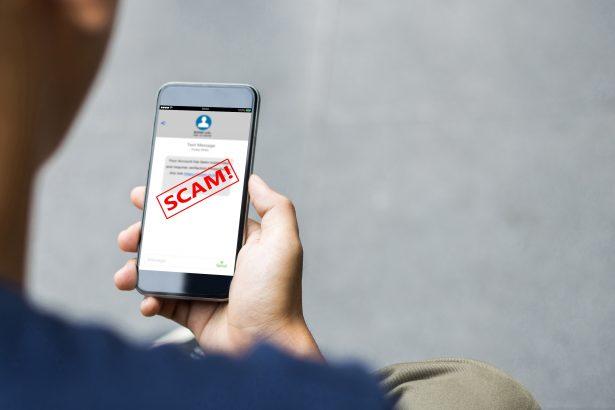Cybersecurity threats continue to evolve, with hackers employing increasingly sophisticated tactics to exploit unsuspecting victims. One such threat is the “I Am a Hacker” email scam, which aims to extort money by claiming that the recipient’s device has been hacked. This article delves into the nature of this scam, the actions and consequences of the associated malware, detection names for the malware, similar threats, a thorough removal guide, and best practices to prevent future infections.
Understanding the “I Am a Hacker” Email Scam
The “I Am a Hacker” email scam is a form of sextortion where the hacker claims to have hacked the victim’s device and obtained compromising information, such as videos or photos. The scammer typically demands a ransom, usually in the form of cryptocurrency, to prevent the release of the purportedly embarrassing content.
This scam is designed to induce fear and urgency, prompting the victim to pay the ransom quickly without verifying the hacker’s claims. While the email may seem credible, it is often a bluff, with the hacker having no real access to the victim’s data.
Actions and Consequences of the Malware
While many “I Am a Hacker” scam emails are simple phishing attempts with no actual malware involved, some versions may contain malicious attachments or links that, when clicked, can infect the victim’s device with malware. The actions and consequences of such malware can be severe, including:
- Data Theft: Malware can steal sensitive information, including passwords, credit card details, and personal files.
- System Damage: Some malware can corrupt or delete critical system files, rendering the device unusable.
- Privacy Invasion: Hackers can use malware to gain control of webcams and microphones, potentially capturing private moments.
- Financial Loss: Victims may suffer financial loss from paying the ransom or from unauthorized transactions made with stolen financial information.
Contents of the Malicious Email Message
The text from the e-mail is the following:
Hello!
I Am a Hacker who has аccess to your operating system.
I also have full аccess to your account.
I’ve been wаtching you for a few months now.
The fact is that you were infected with malwаre through an аdult site that you visited.
If you are not familiar with this, I will explain.
Trojаn Virus gives me full аccess and control over a computer or other device.
This means that I can see everything on your screen, turn on the camera and microphone, but you do not know about it.
I also have аccess to all your contacts and all your correspondence.
Why your аntivirus did not detect mаlwаre?
Answеr: My mаlwаre uses the driver, I update its signatures every 5 hours so that your аntivirus is silent.
I made a vidеo showing how you sаtisfy yourself in the left half of the screen, and in the right half you see the video that you watched.
With one click of the mouse, I can send this vidеo to all your emаils and contacts on social networks.
I can also post access to all your e-mail corrеspondence and mеssengers that you use.
If you want to prevent this,
trаnsfer the аmount of 1300 USD (US dollаrs) to my bitcоin аddress (if you do not know how to do this, write to Google: “Buy Bitcоin”).
My bitcоin address (ВТС Wallet) is:
bc1qg50kg7vfzf9ksg52csummcmv05h7qz4eu03kch
After receiving the pаyment, I will delеte the vidеo and you will never hear me again.
I give you 52 hоurs (more than 2 days) to pаy.
I have a notice reading this lеtter, and the timer will work when you see this letter.
Filing a complaint somewhere does not make sense because this email cannot be tracked like my bitсоin аddrеss.
I do not make any mistakes.
If I find that you have shared this message with someone else, the video will be immеdiately distributed.
Best regards!
Detection Names for the Malware
Security software and researchers have identified various strains of malware associated with the “I Am a Hacker” scam. Some detection names include:
- Ransom:MSIL/MassMiner
- Trojan:Win32/Occamy.C
- Ransom:HTML/FakeBrowser
- Trojan:Win32/Phorpiex
- Trojan:HTML/Browlock
Similar Threats
The “I Am a Hacker” email scam is not unique; it shares similarities with other cyber threats, such as:
- Phishing Scams: Emails that appear to be from legitimate sources but aim to steal personal information.
- Ransomware: Malware that encrypts the victim’s data and demands payment for the decryption key.
- Sextortion Scams: Threats that claim to have compromising material and demand payment to keep it private.
- Tech Support Scams: Fraudulent claims of technical support issues to gain remote access to a victim’s device.
Comprehensive Removal Guide
Step 1: Disconnect from the Internet
- Disconnect your device from the internet to prevent further data transmission.
- Disable Wi-Fi or unplug the Ethernet cable.
Step 2: Enter Safe Mode
- Restart your computer.
- Press F8 (or Shift + F8) before Windows starts to load.
- Select “Safe Mode with Networking” from the menu.
Step 3: Identify and Remove Suspicious Programs
- Open “Control Panel” and select “Programs and Features.”
- Look for recently installed or suspicious programs.
- Uninstall any unfamiliar or unwanted applications.
Step 4: Use Built-in Security Tools
- Run a full system scan using Windows Defender or another built-in security tool.
- Follow the prompts to remove any detected threats.
Step 5: Remove Malicious Extensions
- Open your web browser and navigate to the extensions/add-ons menu.
- Remove any suspicious or unfamiliar extensions.
Step 6: Reset Browser Settings
- Reset your browser settings to default to remove any lingering malware.
- Clear your browser cache and cookies.
Step 7: Restore System Settings
- Use Windows System Restore to revert to a point before the infection.
- Open “Control Panel” and select “System and Security.”
- Click “System Protection” and choose “System Restore.”
- Follow the prompts to restore your system.
Step 8: Update and Secure Your System
- Update your operating system and all software to the latest versions.
- Enable automatic updates to ensure your system stays protected.
Best Practices for Preventing Future Infections
- Be Cautious with Emails: Do not open attachments or click on links in unsolicited emails. Verify the sender’s identity before responding.
- Use Strong Passwords: Employ complex passwords and change them regularly. Consider using a password manager.
- Enable Two-Factor Authentication: Add an extra layer of security to your online accounts.
- Keep Software Updated: Regularly update your operating system, browser, and applications to patch security vulnerabilities.
- Backup Data Regularly: Keep regular backups of your important data on an external drive or cloud storage.
- Educate Yourself and Others: Stay informed about the latest cybersecurity threats and educate others on how to recognize and avoid scams.
By following these guidelines, you can protect yourself from the “I Am a Hacker” scam and other cyber threats, ensuring your personal and financial information remains secure.




